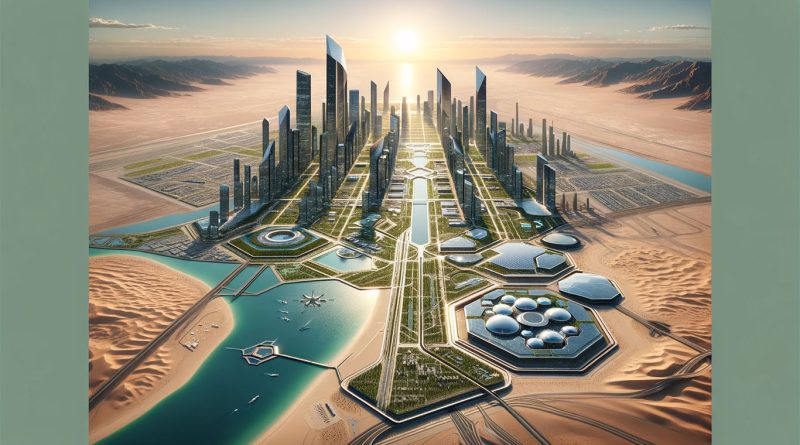Saudi Arabia’s $800 Billion Line to Nowhere
Saudi Arabia is embarking on one of the most ambitious urban development projects the world has ever seen. “The Line,” a futuristic city within the larger NEOM megacity initiative, aims to redefine what it means to live and interact within urban spaces. This linear metropolis stretches across 170 kilometers of desert, promising a zero-carbon footprint and an unprecedented integration of technology, sustainability, and human-centric design.
Vision and Innovation behind ‘The Line’
At the heart of “The Line” Saudi Arabia lies a vision to address the growing challenges of urban living. With an estimated completion timeline extending potentially to 50 years, the project embodies Saudi Arabia’s commitment to its Vision 2030 program, focusing on economic diversification and reducing its oil dependency. The city’s design forsakes traditional urban sprawl for a vertical, linear layout that promises efficiency, connectivity, and harmony with nature. It’s a bold statement against the backdrop of climate change and urban congestion plaguing cities worldwide.
“The Line” is a testament to human ingenuity, designed to withstand the challenges of its seismic zone location through advanced engineering solutions. Architects and engineers have drawn from global best practices to ensure safety and stability, comparable to other seismic zone cities like San Francisco and Tokyo. The city’s structure, comprising two parallel, mirrored buildings running the length of the site, is not just an architectural marvel but also a solution to the ecological and human rights concerns that have shadowed its development.
Architectural Controversies and Ethical Dilemmas
“The Line” has not been without its controversies, particularly concerning its architectural ambitions and ethical considerations. Renowned architects have withdrawn from the project, citing human rights and ecological concerns. The project’s secrecy and confidentiality agreements have sparked debates about transparency in such transformative ventures. Critics argue that the lack of sustainability and the moral double standards of involved architects undermine the project’s ethical foundation.
At the forefront of “The Line” is an ambitious integration of technology aimed at creating a smart, seamless urban environment. However, this technological utopia raises significant privacy concerns, particularly in a country with a complicated stance on digital rights. The potential for “The Line” to become a “surveillance city” has alarmed digital rights advocates, who worry about the implications of its data collection schemes on personal freedoms.
Displacement and Cultural Impact
The development of “The Line” has led to the displacement of local tribes and communities, igniting a fierce debate about the cost of progress. The Howeitat tribe, among others, has been significantly affected, with reports of arrests and detentions for those resisting eviction. This situation highlights the complex interplay between development and cultural preservation, raising questions about the rights of indigenous populations in the face of mega projects.
Environmentalists have raised alarms about the project’s potential to disrupt local ecosystems and biodiversity. The construction of such a massive structure across diverse ecological zones poses risks to migratory species and could create barriers that fragment habitats. Concerns about the mirrored exterior facade’s danger to bird populations have yet to be fully addressed, underscoring the need for more ecologically sensitive planning.
The Global Reception
“The Line” Saudi Arabia has been met with both awe and skepticism globally. Its promise of a futuristic, sustainable city has captured the imagination of many, yet the practical and ethical challenges it faces are significant. As construction progresses, the project remains a litmus test for the feasibility of such ambitious urban developments and their ability to harmonize with the natural and social environment.
“The Line” encapsulates the ambition and complexity of reimagining urban spaces in the 21st century. Its development will be closely watched as a barometer for the feasibility of such grand visions and their impact on our collective future.
